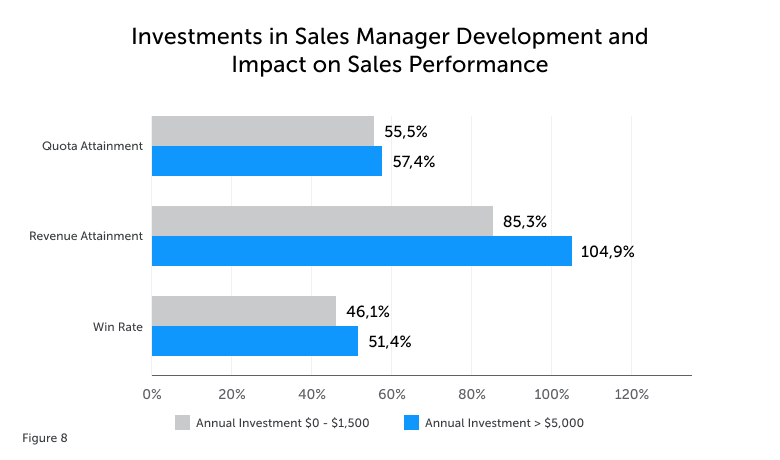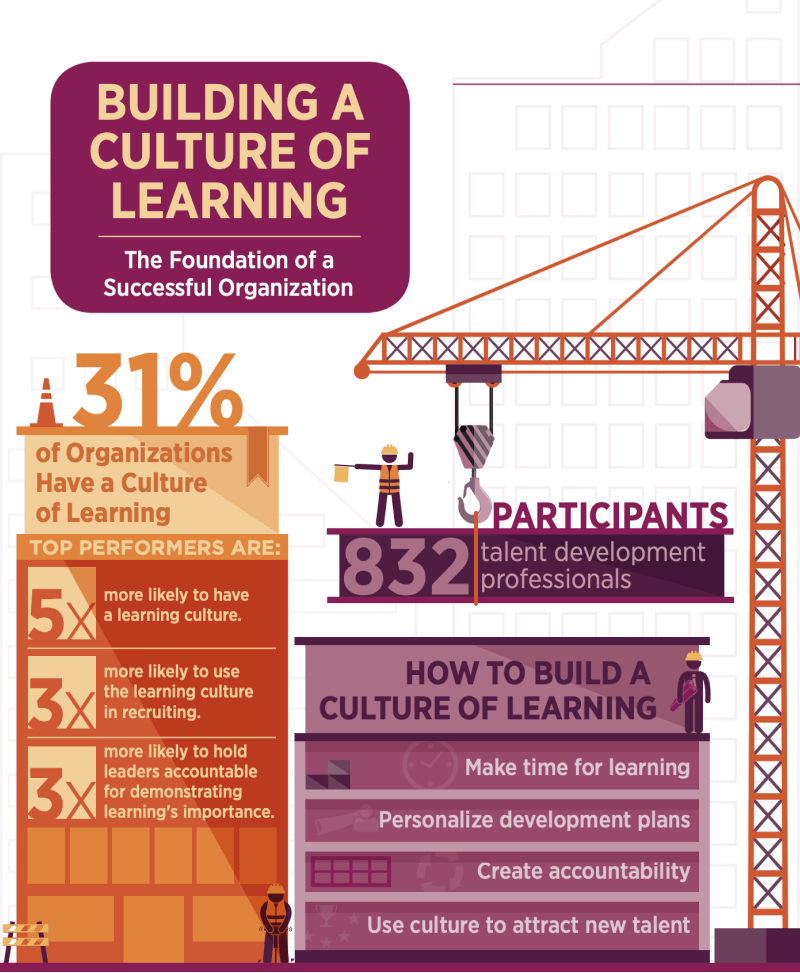Employee Development
A detailed look at how HR professionals and L&D experts can create comprehensive, actionable employee development plans.

In this guide, we’ll first explore what employee development means. But then, we’ll also examine various other facets of it, including its benefits to the organization, and various methods and approaches to going about developing employees.
We’ll also go into detail on how HR professionals and L&D experts can create comprehensive, actionable employee development plans for their organizations.
Contents:
- What is employee development?
- Benefits and importance of employee development
- What are the most effective employee development methods?
- What are the employee development areas?
As Human Resource (HR) specialists or Learning & Development (L&D) professionals, employees are one of the most precious “assets” that we deal with.
Decisions about Interviewing, hiring and evaluating and assessing them are all in a day’s work for most of us. One very crucial aspect of our jobs is focusing on ways to further develop these assets.
While it might seem like a rather straightforward challenge to address – just provide them some training! – reality is starkly different! How we develop the company’s human assets – whether they are as good as or better than a competitors’ – could very well determine the organization’s competitiveness.
What is employee development?
Employee development is a process of improving employees’ existing competencies and skills and developing newer ones to support the organization’s goals.
Inherent in this definition is the following finer points of interest:
- Employee development isn’t just about developing organizational L&D strategies
- It’s more than just implementing mandatory employee training
- It goes way beyond meeting with employees annually to discuss their shortcomings and highlighting improvement needs
When done right, even though employee development requires investment (time, effort and financing) from the company, those investments will more than pay off over the longer-term.
For instance, sometimes letting go of an employee with limited skills, or developing those skills to the organization’s standards, will both cost money. However, if those development efforts result in longer-term employee retention, that’s a win-win situation for everyone concerned – thanks to a well-thought-out employee development strategy.
In the above scenario, what has employee development done?
- It has avoided the costly (and sometimes protracted) process of hiring a replacement for an outgoing employee
- It has preserved a lot of “sunk capital” already invested in that employee in terms of his/her organizational experience and expertise
- It allows HR professionals and L&D experts to build upon (rather than build from scratch) organization culture (different from technical experience and expertise) already inculcated into that employee
All-in-all, further developing an employee results in getting human assets up and running, to organizational standards, much more efficiently than onboarding or indoctrination training of freshly hired employees would.

Career development plan template
This template helps employees and leaders plan together for career growth: set goals, assess skills, and make a plan.
Download nowBenefits and importance of employee development
A carefully thought-out employee development strategy is important at multiple levels. And when well executed, it can accrue multiple benefits to all parties concerned, including employees, HR managers, and the broader organization.
Some of these benefits include:
1. Performance Improvement
For companies to remain competitive in their niche, the organization must continue to outperform the competition.
Employee development can help the organization meet – and even exceed – performance expectations.

Source: 2017 CSO Insights – Sales Manager Enablement Report
In a 2017 report, focused on the impact that employee development has on performance, CSO Insights (The research division of Miller Helman Group) showed how sales manager development can drastically improve performance metrics such as quota attainment, revenue attainment and win rates. In some cases, investing a little as $500 in employee development yielded 46.1%-win rate improvement, while a $5,000 investment produced 51.4% more wins for the company.
2. Better handle unexpected situations
Today’s business environment is all about constant change. And that change not only brings challenges (for the workforce), but if handled properly, it also opens previously unexpected opportunities. It is therefore vital for the workforce to be able to handle ever-evolving situations quickly and effectively.
“More than two-thirds of business leaders believe that if their company does not become significantly digitalized by 2020, it will no longer be competitive.”
– Brian Kropp, group vice president of Gartner’s HR practice. Source.
Adaptable employees are great at improvising solutions where employees with less-developed skills would simply accept the status quo.
One of the benefits of having a well-defined employee development program is that it can equip employees to better handle the unexpected.
3. Learning culture inside an organization help attract new employees and improve loyalty
HR professionals can attest to the fact that it’s not just enough to advertise job vacancies – it’s equally important for prospective employees to want to apply for those posts.
If the latter is absent, companies will not attract the best and the brightest to help them remain competitive.
According to a Whitepaper produced by ATD Research (sponsored by Paradigm Learning) – titled Building a Culture of Learning, The Foundation of a Successful Organization – companies are more competitive and agile, and their workforce more engaged when there’s a culture of learning and knowledge-sharing across the organization.

Helping develop employee talent, including through tactics such as personalized development plans, creates a highly attractive working environment.
According to the study such organizations, that have a mature learning culture, are three-times more likely to use that fact as a recruitment tool. And implementing a robust employee development program is the first step in that direction.
4. Save money via retaining employees
Investing in in-house employee skills development programs is important to ensure that the workforce can do what they must do to “keep the ship afloat”. However, employee development can also be a big money-saver in the longer-term.
“Global Talent Monitor’s report on workforce activity in 2Q18 shows that the lack of future career development remains a key driver of employee attrition — cited by 40% of departing employees as a dissatisfying factor in their job.”
– Gartner
AT&T discovered that only 50% of its global, 250,000-strong workforce had the adequate skills to take the company into the future. As a result, company management embarked upon a $1-billion retraining (the company calls it a “re-skilling”) program. So, how did this in-house employee skills development program help the company save money? Math!
The company worked out that the median cost of replacing a worker who lacked the requisite skills was around 21% of that employee’s salary. And as employee base pay increases, the cost of replacing them also rises – making retraining a much more cost-effective option. Not only do organizations not have to start from the ground up (as they would with fresh hires) – but as AT&T found, companies also preserve valuable institutional knowledge by retraining and retaining their current workforce.
“It’s important for companies, at the senior level, to engage and retrain workers rather than constantly going to the street to hire,”
– Bill Blase, Senior EVP Of Human Resources, At&t.
5. Help grow potentially good employees into great leaders
If an organization is to grow, survive and thrive in the long-term, it needs to build a continuous stream of would-be-leaders.
Unfortunately, leadership skills rarely come from attending Ivy League institutions or going on weekend leadership workouts – though that helps.
Organizations with strong leadership demonstrate a +37% rise in revenue per employee and +9% in gross profit margin, according to the report of Bersin by Deloitte – High-Impact Leadership. The New Leadership Maturity Model.
Financial Performance Indicators in Organizations with Low versus High Leadership Maturity*
| Financial Performance Indicator | Mean for Low Maturity Organizations (†) | Mean for High Maturity Organizations (‡) | Difference in Performance by Organizations with High Maturity versus Low Maturity |
|---|---|---|---|
| Revenue per Employee | 402.35 | 551.65 | +37% |
| Gross Profit Margin§ | 43% | 47% | +9% |
Source: Bersin by Deloitte, 2016.
* The effects are significant at a 95% confidence level. We controlled for organization size via regression analyses, both by employee number and revenue as control variables when appropriate.
† An organization is categorized as having “low maturity” if its composite score is within the bottom 50% among all organizations included in this study.
‡ An organization is categorized as having “high maturity” if its composite score is within the top 50% among all organizations included in this study.
§ To calculate the percentage difference, 47 percent minus 43 percent, divided by 43 percent, and multiplied by 100 equals 9.3 percent.
The American Management Association® outlines 10 leadership traits that would-be-leaders must possess. Typically, these traits, required to turn good employees into great leaders, come from within the organization.
One benefit of instituting an in-house employee development program is that those leadership skills can be fine-tuned to the organizations’ standards.
List of Top 10 Leadership Traits
- Be Results Orientated
- Be Customer Focused
- Have a Vision
- Be Strategically Focused
- Effectively Get Work Done Through Others
- Be Good at Dealing with Conflict
- Ask Great Questions
- Make High-Quality Decisions
- Be a Trusted Leader
- Be an Incredible Communicator
6. Improve employee engagement and motivation with good training
Having a workforce that’s fully committed and engaged with the organization at every level is vital for success. Driving employee engagement, so that they remain motivated to the company’s mission, is a function of various factors, such as a good working environment, employee recognition and appreciation, frequent communication and great training.
Studies by the Dale Carnegie institute found that a highly engaged workforce can lead to exceptional productivity improvements – as high as 202%. In fact, 85% of leaders believe that employee engagement is a strategic priority.
According to Gartner, globally, employee engagement is low and has been low for at least the last two decades. The latest Gartner Global Talent Monitor finds that only 32% of employees globally report high levels of intent to stay and only 14% report high levels of discretionary effort day to day.
A well-defined employee engagement program can balance all the critical employee motivational factors, including training and skills development, to deliver the benefits of a fully-motivated workforce across the company.
Lacking employee engagement?
Our approach makes learning more interesting by using different ways to keep learners motivated and inspired, beyond just captivating content.
Learn more7. This gives the company flexibility to expand, innovate and compete more robustly within its niche
To be a true market leader in one’s niche, it is important for companies to be nimble, flexible and accommodative to the needs of their customers and partners.
Having a well-balanced workforce, that has the skills to innovate and compete for new business opportunities, is one benefit that robust employee development plans offer to organizations.
Such programs not only develop existing skills but can be used to deliver longer-term competitiveness by instilling new skills that might be needed in the future.
In summary, therefore, a well-trained, dynamic and highly motivated workforce is crucial to any organization. And the best way to raise employees to such standards is to invest in their ongoing development. Such employees not only offer financial benefits to the organization, in terms of profitability and performance improvements, but they help with employee morale and retention.

How to connect skill building to career mobility
You will get four steps to start developing successful skills development and career mobility programs.
Download guideWhat are the most effective employee development methods?
When it comes to employee development, there are many methods and types out there, but of course, some will be more effective than others.
As you will see, there is more to employee development than simply creating a training program, although training is one of the methods listed.
It is much more robust than that and involves exposing employees to new information and ideas in various ways, from putting them in other roles, building a mentoring program, even using virtual reality!
As with all types of learning, people will respond differently to each type, and success depends on the person being trained – and what they are learning.
Even with those differences, there are some methods that are more effective than others, and those are:
- Training
- Task/job rotations
- Coaching
- Mentoring
- Workshops/Committees/Working-Groups
- Simulations
- Conferences
- On-the-job training
- Self-study
If you would like a thorough explanation of each of these methods, check out our in-depth article on Employee Development Methods.
What are the employee development areas?
It’s not enough to simply decide that your organization needs employee development, you must also be able to pinpoint which areas specifically need developing.
Without a comprehensive understanding of that, you won’t be able to develop an effective employee development plan.
Each of these critical areas includes many different types of skills, from conflict management to relationship building. Some are soft skills, others are hard skills, but in general, all of them will help your employees become more effective and ultimately lead to better business results.
The 7 key employee development areas of improvement are:
- Flexibility
- Communication skills
- Conflict Resolution, tactfulness, and work ethic
- Leadership Skills
- Organizational Skills
- Creativity Skills
- Stress Management
For a comprehensive guide to all areas listed above, read our article on Employee Development Areas.

L&D strategy framework
You will receive a list of questions along with a spreadsheet template to help you analyse your L&D strategy.
DOWNLOAD FRAMEWORK



